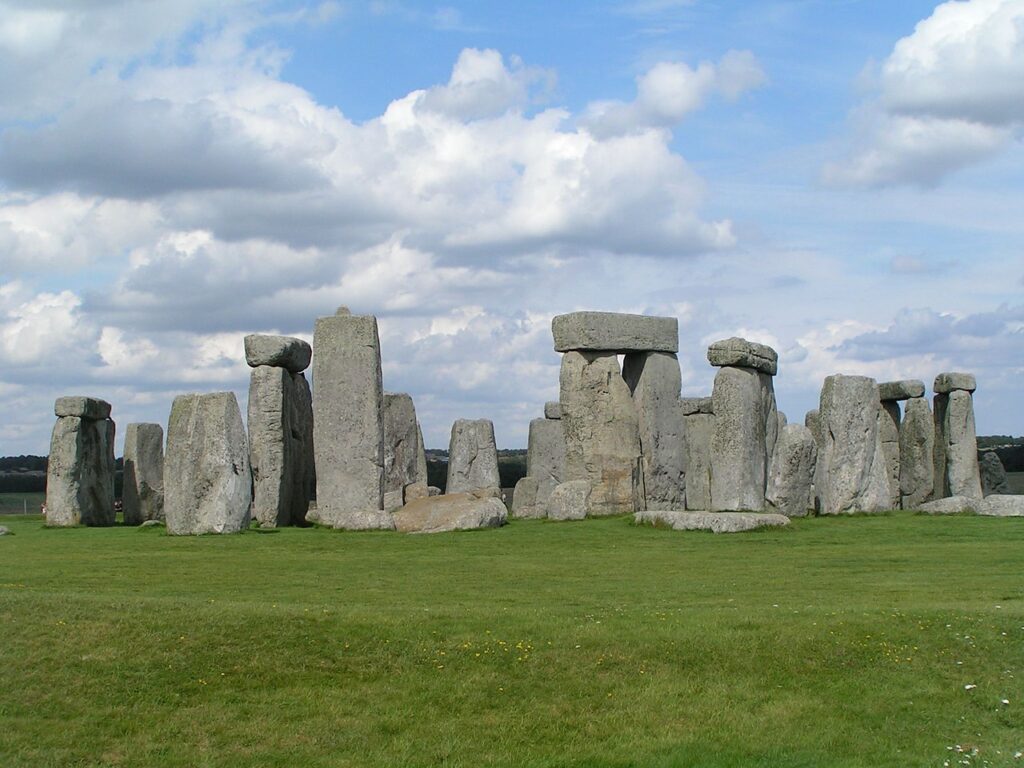
Before we go, I have a new mystery for you. Researchers, with permission, took a small sample from the altar stone at Stonehenge and examined its composition and structure in a new level of detail. This information made it possible to determine the stone is 1000-2000 million years old, and chemically similar to rocks in the Orcadian Basin of Scotland. This research was a bit of a surprise to everyone because it had been assumed that this stone, like others, came from Whales.
Stonehenge was built about 5000 years ago in Southern England. With one exception, it is consists of two different types of stones; the great Sarsen stones, and smaller bluestones. The smaller stones are well matched to a site in the Preseli Hills of Wales. And the standing Sarsen stones are a match to a quarry 15 miles north of Stonehenge in England.
And these two different quarries could explain all but one of the 160 some odd stones that make up Stonehenge. The odd rock out was the altar stone, which is uniquely made of sandstone.
And, for reasons that have everyone scratching their heads, it really looks like that one six-ton stone was moved over 700 kilometers from Scotland to the South of England. Why? No idea. How? We can only guess. It is possible that the Neolithic people were able to somehow transport it by boat. This would imply the early Brits were far more organized than previously thought.
And the were organized around constructing something capable of predicting eclipses and measuring seasons. I for one support our early ancestors focusing island-spanning endeavors on setting things up to – among other things – study the sky.
